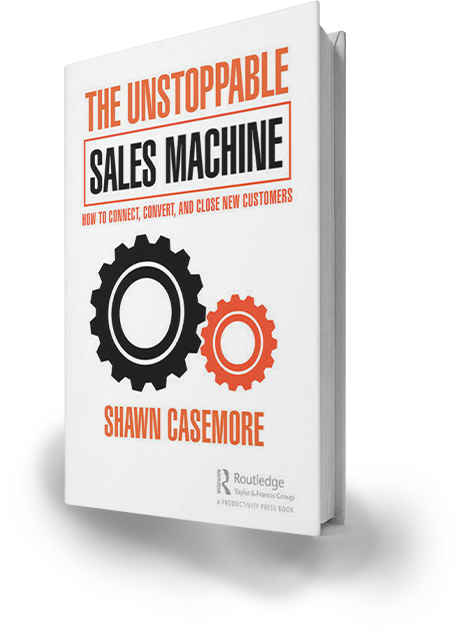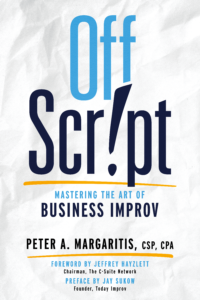The Wallet Allocation Rule
Timothy Keiningham
Customer Loyalty Isn’t Enough. Grow Your Share of Wallet! The Wallet Allocation Rule by Timothy Keiningham is a revolutionary, definitive guide for winning the battle for share of customers’ hearts, minds, and wallets. Backed by rock-solid science published in the Harvard Business Review and MIT Sloan Management Review, this landmark book introduces a new and rigorously tested approach–the Wallet Allocation Rule–that is proven to link to the most important measure of customer loyalty: share of wallet. Companies currently spend billions of dollars each year measuring and managing metrics like customer satisfaction and Net Promoter Score (NPS) to improve customer loyalty. These metrics, however, have almost no correlation to share of wallet. As a result, the returns on investments designed to improve the customer experience are frequently near zero, even negative.
With The Wallet Allocation Rule, managers finally have the missing link to business growth within their grasp–the ability to link their existing metrics to the share of spending that customers allocate to their brands. – Learn why improving satisfaction (or NPS) does not improve share. – Apply the Wallet Allocation Rule to discover what really drives customer spending. – Uncover new metrics that really matter to achieve growth. By applying the Wallet Allocation Rule, managers get real insight into the money they currently get from their customers, the money available to be earned by them, and what it takes to get it. The Wallet Allocation Rule by Tim Keiningham provides managers with a blueprint for sustainable long-term growth.


Every company, whether it is a small business or a Fortune 500 corporation, is obsessed with two things: profits and growth. The reason for profits is obvious: Profits determine a company’s viability.
Growth, however, is the lifeblood of companies. It is arguably the most important gauge of a company’s long-term success. Small businesses must grow to a size that is large enough to ensure a viable economic return. And for large public companies, growth is what creates economic value for shareholders.
Unfortunately, growth is a goal that that is seldom achieved. For small businesses, a whopping 80 percent will fail within the first 18 months![1] And for those that survive, most will start small and stay small.[2]
It isn’t much better for big companies either. An investigation of 4,793 public companies reported in the Harvard Business Review found that fewer than five percent achieved net income growth of at least five percent every year for five years.[3] And once growth stalls, the odds of ever resurrecting even marginal growth rates are very low.[4]
Consequently, while there is no question that growth is the imperative, the dismal results for most companies prove that both small business entrepreneurs and corporate executives don’t have a good handle on what it takes to make it happen.
What Drives Market Share
At its most basic level, market share is the sales for a firm or brand divided by total sales volume for the category. Unfortunately, knowing your market share offers no real insight into what drives growth.
To do that, we need to understand the impact of three distinct components that drive the market shares of all firms:[5]
- 1) Penetration: This is the proportion of customers within an industry category who use your brand at least once in a given time period.
- 2) Usage: This is a measure of how heavily customers of your brand use products in the category relative to all customers in that same category.
- 3) Share of Wallet: This is the percentage of your customers’ spending in the category that is allocated to your brand
Viewing market share as a function of these different components points us towards three very different strategies for growth.
A penetration strategy is all about acquiring new customers. This means persuading potential customers to try the brand, and expanding into new markets. Without question, acquiring new customers will always be vital to the success of any business. But as markets become saturated, it gets more and more difficult to find new potential customers. In fact, lower demand and higher competition in the developed world has caused some of the most respected brands to chase growth in the developing world.
A usage strategy is about getting consumers of your brand to increase their total consumption in the category. In other words, if your brand can get its customers to buy more in the category than competitors do, your market share will increase. It’s a good idea if you can do it. For most categories, however, getting customers to buy more is very hard to do. Need tends to drive most of our purchases. For example, we don’t tend to buy more toothpaste when we start making more money.
A share of wallet strategy is about getting your customers to allocate a greater percentage of their spending in the category to your brand. It is almost always easier and more cost effective to improve current customers’ share of spending with a firm (i.e., share of wallet) than it is to acquire new customers. That is because in most categories today consumers are not loyal to “a” firm or “a” brand, but rather by “a set” of firms/brands.
This means that more customers alter their spending patterns instead of completely halting business with a firm. Therefore, efforts designed to manage customers’ spending patterns tend to represent far greater opportunities than simply trying to maximize customer retention rates. For example, a study by Deloitte finds that nearly 50 percent, on average, of hotel loyalty members’ annual hotel spend is not with their preferred brand.[6] Moreover, a study by McKinsey finds that the cost of lost wallet share typically exceeds the cost of customer defections. For example, McKinsey found that on average 5 percent of bank customers close their checking accounts each year; the impact of losing these customers results in a loss of 3 percent of the banks total deposits. By contrast, 35 percent of customers reduced their share of deposits each year, resulting in a loss of 24 percent of total bank deposits.[7] Moreover, they observed this same effect for all 16 of the industries that they examined.
What Drives Share of Wallet
Share of wallet is arguably the most important gauge of a customer’s loyalty. Clearly loyalty builds as the result of consistently positive customer experiences. In fact, Gartner reports that “89% of companies surveyed plan to compete primarily on the basis of the customer experience by 2016.”[7] And this explains the near obsession with customer satisfaction and Net Promoter Score (NPS) levels at most companies.
There’s just one problem. Satisfaction and NPS are so weakly correlated to the share of spending that customers allocate to the brands that they use that it is useless as a metric to drive higher share of wallet. On average, satisfaction and NPS explained a miniscule one percent of the variation in customers’ share of spending. In other words, 99 percent of what is going on with consumers’ share of category spending is completely unexplained by knowing satisfaction or NPS.
The result is that companies spend a great deal of time and money on efforts to improve customers’ perceptions of the experience, but typically find that the impact on customers’ share of spending shows very little improvement.
The problem, however, isn’t that having satisfied customers who will recommend your brand is unimportant. Rather it’s the way that companies go about measuring and managing satisfaction that’s wrong.
It’s not your score that matters. It’s all about your rank. In other words, do customers perceive your brand as better, the same, or worse than competing brands they also use? It turns out that by simply knowing your brand’s rank and the number of competing brands a customer also used, managers can now accurately predict share of wallet using a simple formula, called the Wallet Allocation Rule:
Share of Wallet = (1 – (Rank/(Number of Brands + 1)))/(2/Number of Brands)
Where:
Rank = the relative position that a customer assigns to a brand in comparison to other brands also used by the customer in the category.
Number of Brands = the total number of brands used in the category by the customer
There’s a lot of Harvard Business Review[9] and MIT Sloan Management Review[10] published science behind the Wallet Allocation Rule. But the one of the most important takeaways is this: Customers have a logical reason for using every brand that they do. So the key to gaining share is giving customers fewer reasons to use the competition.
And that in a nutshell is why simply focusing on what drives satisfaction or Net Promoter Score is unlikely to have much of an impact on share. Satisfaction and NPS get at why customers use your brand, NOT why they use the competition. That’s why the key drivers of share are almost never the same as the drivers of satisfaction or NPS. In fact, we often see that the main drivers of satisfaction and NPS have almost no impact on share.
These measures must be put in context of the real-world choices that customers make each and every day. With the Wallet Allocation Rule, managers are able to identify what really drives customers’ decisions to allocate more of their wallets to your brand.
So if growth is what you’re after, stop watching your scores and start paying attention to our rank. The path to winning has always been the same. It’s not just how many points you score that matters—you need to score more than your competitors do.
REFERENCES
[1] Wagner, Eric T. (2013), “Five Reasons 8 Out Of 10 Businesses Fail,” Forbes, (September 12). http://www.forbes.com/sites/ericwagner/2013/09/12/five-reasons-8-out-of-10-businesses-fail/
[2] Dahl, Darren (2010), “How to Develop a Business Growth Strategy,” Inc. (February 25), http://www.inc.com/guides/small-business-growth-strategies.html
[3] McGrath, Rita Gunther (2012). “How the Growth Outliers Do It,” Harvard Business Review. 90 (January-February), 110-116.
[4] Olson, Matthew S., Derek van Bever, and Seth Verry (2008), “When Growth Stalls,” Harvard Business Review. 86 (March), 50-61.
[5] Farris, Paul W., Neil T. Bendle, Phillip E. Pfeifer, David J. Reibstein (2006), Marketing Metrics: 50+ Metrics Every Executive Should Master. Upper Saddle River, NJ: Wharton School Publishing, pp. 26-27, 32.
[6] Weissenberg, Adam, Ashley Katz, and Anupam Narula (2013), “A Restoration in Hotel Loyalty: Developing a Blueprint for Reinventing Loyalty Programs,” Deloitte Development LLC.
[7] Coyles, Stephanie and Timothy C. Gokey (2002), “Customer Retention is Not Enough,” The McKinsey Quarterly, No. 2, 81-89.
[8] McLellan, Laura (2014), “10 Proof Points – Why Customer Experience Is the Next Big Thing,” http://blogs.gartner.com/laura-mclellan/10-proof-points-why-customer-experience-is-the-next-big-thing/
[9] Keiningham, Timothy L., Lerzan Aksoy, Alexander Buoye, and Bruce Cooil (2011), “Customer Loyalty Isn’t Enough. Grow Your Share of Wallet,” Harvard Business Review, vol. 89 (October), 29-31.
[10] Keiningham, Timothy L., Sunil Gupta, Lerzan Aksoy, and Alexander Buoye (2014), “The High Price of Customer Satisfaction,” MIT Sloan Management Review. vol 55, no. 3 (Spring), 37-46.

Tim Keiningham is global chief strategy officer at Ipsos Loyalty, the world’s leading professional services firm dedicated exclusively to customer experience, satisfaction, and loyalty with in excess of 1,100 dedicated expert staff located in more than 80 countries. A prolific writer, Tim has authored or edited nine books. He also works to expand the science and practice of marketing and management and has published numerous papers in leading management journals (e.g., Harvard Business Review and MIT Sloan Management Review) and leading academic journals (e.g., Journal of Marketing, Marketing Science, Journal of the Academy of Marketing Science, Journal of Service Research, and Journal of Service Management).
Tim’s research has received more than a dozen prestigious scientific awards, including: – INFORMS Society for Marketing Science, top 20 most influential articles of the past 25 years – Marketing Science Institute / H. Paul Root Award from the Journal of Marketing for the article judged to represent the most significant contribution to the advancement of the practice of marketing (twice) – Citations of Excellence “Top 50” Award (top 50 management papers of approximately 20,000 papers reviewed that year) from Emerald Management Reviews – Service Excellence Award (best paper) from the Journal of Service Research – Outstanding Paper Award (best paper) from the journal Managing Service Quality (twice) – Next Gen Disruptive Innovation Award for the discovery of the Wallet Allocation Rule.
Tim received a BA from Kentucky Wesleyan College (USA), an MBA from Vanderbilt University (USA), and a PhD from Staffordshire University (UK).






















